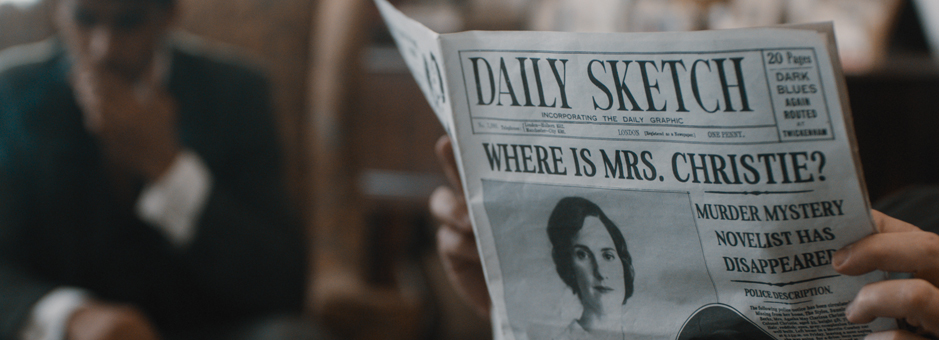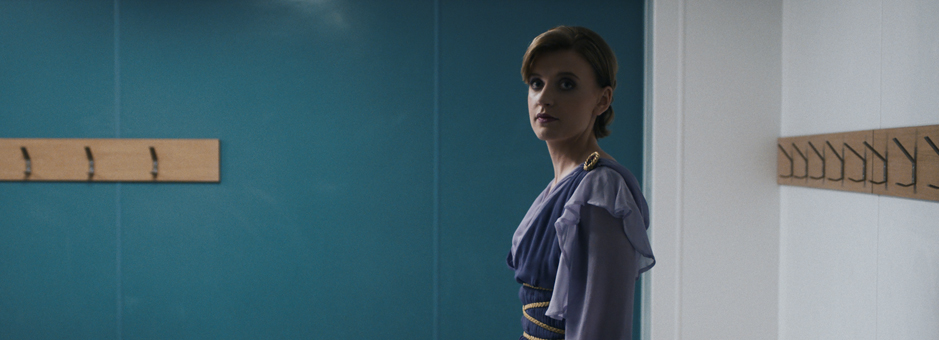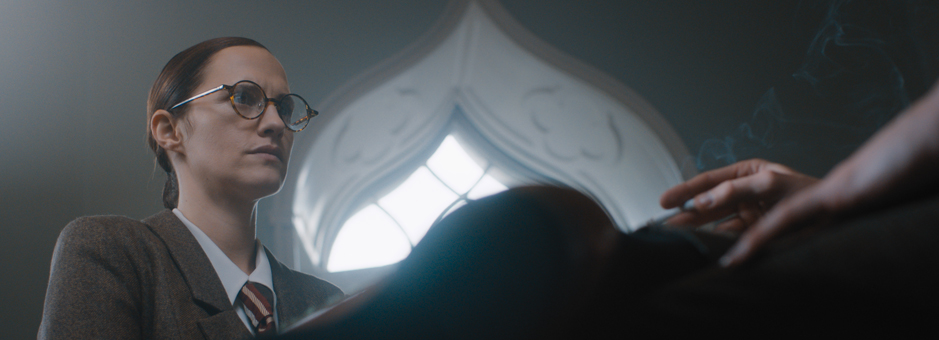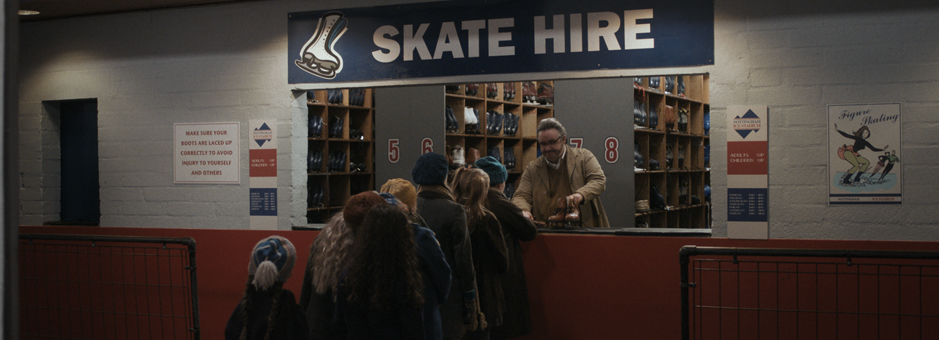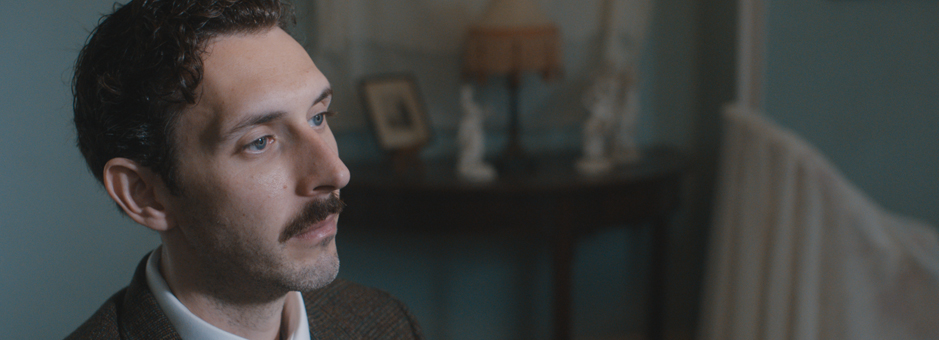Case Studies
Ka-boom enhances period dramas with modern Baselight colour workflows
Two of the most popular dramas on UK television at Christmas 2018 told very different stories but had one common factor: they each needed to evoke the look and feel of an earlier period. The producers of both turned to Belfast post house Ka-boom, and colourist Jim Agnew.
Torvill & Dean revealed the backstory to the ice dancers whose routine to Ravel’s Bolero won them a gold medal at the Sarajevo Olympics in 1984. The movie starts with the time they were first paired, in the late 1960s, before moving on to their glory years in the 1980s.
The time shifted to a little earlier for Agatha and the Truth of Murder. This took a fresh look at the 11 days in 1926 when thriller writer Agatha Christie simply disappeared, before reappearing in Harrogate (and remaining tight lipped to the end about what she had done).
In each case, the producers wanted to create a sense of time and place through the look of the shows. Giving both the feel of a previous era while maintaining a crisp high quality called for sophisticated colour control.
Ka-boom started as an audio facility, before adding picture editing in response to client demand coupled with the need for greater post-production options in Northern Ireland.
Co-founder Zach Willis felt almost from the start that they needed something more than the basic colour tools provided in the Avid platforms, so he experimented with Baselight Editions – the plugin that gives the editor full access to the Baselight grading toolset directly within Avid. In addition, the Truelight colour space concept developed by FilmLight enabled the facility to implement efficient colour workflows; this meant they could review the final look of the production accurately at any point in the digital post-production process, saving valuable time.
The functionality proved so popular to both editors and clients that the decision was taken to build a new dedicated grading suite, equipped with a Baselight ONE grading system and Slate control surface. The room went online in 2015.
“We used Baselight for Avid for about 14 months before the full system went in,” Willis said. “It gave us a good understanding of how the system works, so it was seamless when we put in the full Baselight – nothing was alien to our colourist.
“Which was good because it was instantly in work,” he added. “The guys from FilmLight finished the installation on a Friday night, and on the Monday morning we were grading a BBC Scotland show. We got great support from FilmLight, but because of Baselight Editions we could jump straight into grading a documentary. And the system has not been idle since.”
In new dramas Torvill & Dean and Agatha and the Truth of Murder, Jim Agnew pointed out that, while the workflows and end results were very different, there were some uniting factors. “Both projects were shot by the same DoP, Damien Elliot. I’ve known Damien for years, so we understand each other’s taste and approach to images.
“They were both shot on ARRI cameras, using Log-C colour space and ProRes outputs, in a mixture of HD and 2K,” he continued. “FilmLight’s T-Log colour space was a perfect fit.”
Torvill & Dean is set in two different time periods, and the production wanted to clearly differentiate them through subtle shifts in the look. The earlier scenes, featuring the central characters as children, have a faded and de-saturated quality. The 80s scenes have the vibrant look of the time, with crisper images and a much bolder colour palette.
“For both treatments we used different Baselight Looks lower down the stack,” Agnew explained. “It gave the images the required density, and helped us unify the colours.”
The script of Agatha and the Truth of Murder told the story as a mystery, and the producers wanted a more stylised, genre-inspired look. The art and costume departments had embraced this, using a 1920s period colour palette, so Agnew’s task was to provide a sympathetic grade that underlined the look and enhanced the light and shade.
“We also added a subtle autochrome look at the bottom of the stack,” he revealed. “Again, that helped us to unify the look of the whole film.” Both dramas were produced by DSP. They had brought an earlier production to Ka-boom, and were confident to entrust full post on both of these pieces, effectively back to back. “We finished the post on Torvill & Dean, then moved straight on to the Agatha drama,” Agnew recalled. “Damien Elliot and I have spent quite a lot of time together in dim rooms of late!”
The workflows of the two were slightly different, in that colourist Jim Agnew was involved early on in the production of Torvill & Dean. That allowed him to develop some looks and discuss them with DoP Elliot to inform the principal photography. Those looks were then built on to create the final grade.
For Agatha and the Truth of Murder, the shoot was complete before it got to the grading room. Agnew and Elliot worked together to build the look from the ground up.
For both projects, rather than use the full BLG workflow, they elected to grade scene by scene, rendering each out as a separate movie to be dropped into the finishing timeline on Avid. “This still gave us the option of using the full Baselight toolset in the online suite, which is incredibly useful,” Agnew said. “It meant we could drop in some last-minute VFX tweaks onto the Avid timeline, and apply the appropriate grade as a BLG, without round-tripping to the main Baselight room.”
He emphasised the importance of finding workflows that make sense to the production, and are clear and comforting to clients. “Colour grading and picture finishing are technical crafts,” he said. “It can be easy for a client to feel overwhelmed by the process.
“Baselight is a highly technical, state-of-the-art grading system, but above all it is a tool for artists,” he expanded. “While grading on Baselight, the technology tends to fall into the background. Colour manipulations feel natural, intuitive and fast. I can respond to a client’s request almost before they have finished the sentence!”
Ka-boom is set for continued growth, with a number of dramas and factual shows already scheduled. The ability to deliver the best in grading through the Baselight suite is an important part of the facility’s plans for the future.
“FilmLight’s speed at adding new features does not go unnoticed by our clients,” concluded Jim Agnew. “Baselight v5’s Paint tool, and new operators like the Grid Warp, mean that we can achieve results in one room, in one session, that previously were far beyond the scope of a grading session.”
“Colour grading and picture finishing are technical crafts. It can be easy for a client to feel overwhelmed by the process.
While grading on Baselight, the technology tends to fall into the background. Colour manipulations feel natural, intuitive and fast.”
Download




